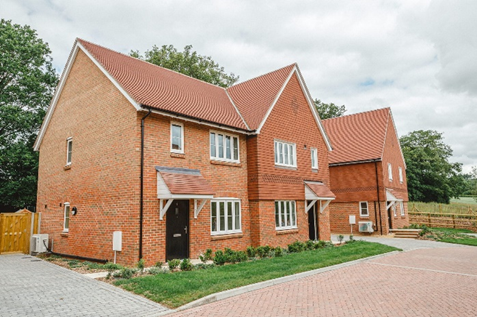T: 01822 851370 E: [email protected]
Visit RSN Survey about life in rural England to find out more.
Rural Roots: How Exception Sites and Section 106 Agreements keep local people in their Communities

Rural Exception Sites (RES) and Section 106 Quota Sites (S.106) are two ways that affordable housing can be built in rural areas. Building affordable housing in rural areas is important because it allows local people to continue living in the villages where they have connections that support them and their community.
A RES is developed on land that would not usually secure planning, but this is granted on an “exceptional” basis if the homes that are built remain affordable for local people in perpetuity. To determine if a site is suitable for a RES, a local need for affordable homes must exist and this is usually evidenced through a parish housing need survey. The survey helps to understand local housing need so that this can be reflected in a suitable proposal.
 |
Confusingly, RES sites also require S.106 Agreements (these are different to those applied to quota sites, S.106 in planning terms refers to an obligation entered when planning is agreed). On a RES site, the S.106 Agreement establishes criteria giving preference to local households when homes are allocated and ensures that the homes will remain affordable in perpetuity. Examples of local connection criteria include living in the parish for a certain amount of time, having immediate family members living in the parish, or being employed in the parish. These criteria help to ensure that the affordable homes are occupied by people who have a connection to the community.
Section 106 Quota Sites (Planning Obligation) are another way that affordable homes can be built in rural areas. The approach applies to sites that are included within areas where development growth is permitted. For developments over a certain size a percentage (quota) of affordable homes must be provided as a condition of planning being granted, these are provided alongside the market homes. The size of development that triggers this obligation varies and in some rural areas it’s more than five, whilst in others it’s more than 10. The number of affordable homes that must be delivered alongside market homes is set by the local planning authority and is usually around 30%, although some set a higher percentage. This ensures that new developments contribute to meeting the local need for affordable homes. Unless a local letting arrangement is agreed these homes will be allocated to meet the need of the wider local authority area, so no preference is given to those from the immediate community.
However, because most rural open market developments are small, they often don’t deliver any affordable homes. A market development will also usually include less engagement with the local community. By contrast, RES sites require a community-led approach, with closer consultation with the community so that views are carefully considered and help to shape proposals from an early stage.
English Rural works to provide affordable homes via both routes. The mainstay of our development programme is delivered via RES opportunities, but we will also acquire affordable homes on S.106 Quota sites when they meet our high standards. Because we are a specialist rural housing association, this will sometimes mean that we might acquire as little as two homes on a market site. Usually because other housing associations won’t and because of this, the developer will sometimes hope to argue that they shouldn’t provide any affordable homes at all but instead pay the local authority a commuted sum, i.e., a financial contribution in lieu of affordable housing which may not necessarily be allocated for new affordable housing.
In conclusion, RES, and S.106 Quota Sites are two important approaches for building affordable housing in rural areas. They help to ensure that new affordable homes are provided to meet local housing need and that rural communities continue to thrive. Keeping communities viable and ensuring that villages retain a mixture of household types and income earners.



